The Rule of Pae/KO
Consider the situation below.

The centre black stone is in dansu/atari. White captures with his next turn.
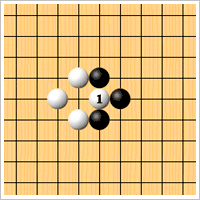
But now the stone White 1 is in dansu/atari himself. If Black were to recapture immediately then White do the same the same board position would repeat itself forever.
In go, the pae/ko rule prevents this situation. It may be stated as
In a position where one stone has just been captured the player with the turn may not take back to immediately to repeat the same position.

(Black 2, White 3 elsewhere on the board)
But now the stone White 1 is in dansu/atari himself. If Black were to recapture immediately then White do the same the same board position would repeat itself forever.
White will now play elsewhere on the board making an important move to which Black must in turn respond. If no such move important enough exists, Black may ignore White's move and connect, ending the pae/ko.
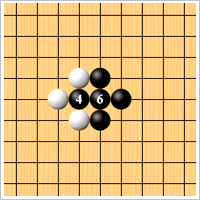
(White 5 elsewhere on the board)
Paes/Kos play an extremely important part of the game of go and can be extremely complicated. Play where paes/kos are taken and lost and threatening moves are made elsewhere on the board are known as pae/ko fights.
The Rule of Pae/KO
Consider the situation below.
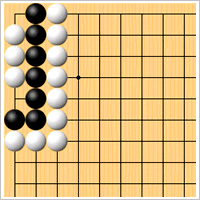
This situation is called a big/seki. Neither player wants to play another move in this area. Let's see why.
Firstly, it is clear that Black does not want to play.
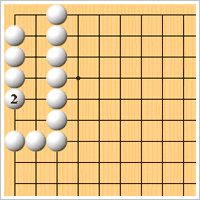
Adding another stone costs Black a liberty and White captures all the Black stones immediately.
However, what if White plays first?
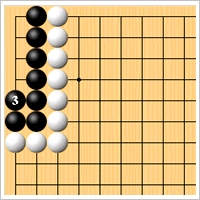
Black captures the white stones and now wherever White plays Black can make a living shape.
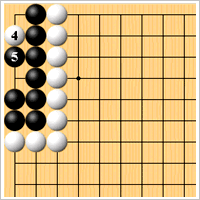
Neither player wants to play again, so this set of stones will remain until the end of the game (presuming the white stones on the outside live).
When counting territory, this big/seki situation scores no points for either side. No stones are taken off and the surrounded intersections are ignored.
Bigs/Sekis occur infrequently but playing inside what your opponent thought was his territory and turning it into a big/seki can be a game winning move.


